Black swans are large, black waterfowl native to Australia. They are easily recognizable because of their dark feathers, known as plumage, and their bright red beaks. Their unique coloration makes them a popular choice for zoos and gardens.
This species is part of the genus Cygnus, which also contains other swan species like mute swans, trumpeter swans, and more. Read on to learn about the black swan.
Description of the Black Swan
Like most swans, this species has a characteristic “S” shaped neck and a large body. Black swans have one of the longest necks of all swan species relative to their size. They are large birds, with a wingspan of 6 feet or more, and a maximum weight of 20 pounds.
These graceful birds commonly use their long wings in territorial or aggressive displays. While swimming, the birds will lift their wings off their backs to make them look larger and more intimidating to predators or rivals.
Interesting Facts About the Black Swan
These beautiful swans are truly a sight to behold. Far from just a pretty sight, black swans, and most other swan species, can be surprisingly aggressive. Learn more about these birds below.
- Protective Pairs – Pairs of swans will defend a territory or water body from intruders. The swans will attack anything they view as a threat or a rival, and become particularly confrontational when they are nesting.
- Male and Female – The males, known as cobs, are slightly larger than the females, known as “pens.” Their offspring, called “cygnets,” are much lighter in color, and darken as they age.
- Waterfowl Relationships – Many species of waterfowl, and most swan species, are monogamous. The birds pair up when they reach sexual maturity, and then remain together for the rest of their life.
- Male Pairs – Scientists estimate that male-male pairs exist in a quarter of the population of black swans. As they obviously cannot reproduce themselves, they will steal a nest that established by another pair of swans. The other pair will construct a new nest and go one to reproduce again, while the male-male pair will incubate the eggs and raise the cygnets!
Habitat of the Black Swan
Unlike some other species of waterfowl, black swans do not live solely freshwater habitats. They will range through fresh, salt, and brackish water (a mixture of the two).
While they inhabit a variety of different ecosystems, their homes must have underwater vegetation for feeding, and plants on the land for nesting. Their first choice of habitat is wetlands, but they will also live in lakes, ponds, mudflats, and even in the ocean near the shore.
Distribution of the Black Swan
These birds can reside primarily in wetland habitats of east and southwest Australia. You can also find them from North West Cape to Eucla, and from Atherton Tableland to Tasmania, and the Eyre Peninsula. Nonnative populations also reside in New Zealand, parts of Europe, Japan, and China. However, not all of these birds have established breeding populations in these areas.
Diet of the Black Swan
Black swans are herbivores, and they feed mostly on underwater plants and algae. In different areas, specific species of plants will make up large portions of their diet. Some of these important plant species include cattails, eel grass, pondweed, and more.
In shallow waters they simply dip their long necks below the surface to eat. In deeper waters they will tip completely upside-down and stretch their necks to reach submerged vegetation.
Black Swan and Human Interaction
Generally speaking, black swans are relatively harmless birds. They do not interact with humans very frequently, and have not established harmful invasive populations in most places. In Australia the National Parks and Wildlife Act protects the birds from harm or harassment. The IUCN Red List evaluates the population as Least Concern.
Domestication
Humans have not domesticated black swans in any way. Humans do sometimes breed them in captivity, but they have not undergone full or partial domestication.
Does the Black Swan Make a Good Pet
For most people, black swans do not make good pets. They are large waterfowl, and require plenty of space and an appropriate water source to thrive. If you have agricultural property with water bodies that have underwater vegetation suitable for the birds you could potentially own one as a pet, but they are quite expensive, and you must purchase them from a breeder.
Black Swan Care
In a zoological setting, black swans, like most swans, tend to take pretty good care of themselves. They need a relatively shallow water body, with plenty of underwater vegetation, and a safe place to nest.
Additionally, you can provide them with a diet that is specifically prepared for herbivorous waterfowl as an added supplement. Because they form lifelong pairs, you should keep the birds with others of their kind, and provide a mate.
Behavior of the Black Swan
Like most swans, black swans form strong pair bonds, beginning their search for a suitable mate once they reach sexual maturity. Once they pair off, the birds will establish a territory for themselves.
They defend this territory from predators and other swans. Black swans use body posturing and loud vocalizations to announce their territories. Outside of the nesting season, some birds will migrate or wander to other areas.
Reproduction of the Black Swan
Breeding and nesting begin in the wet season, usually between February and September. The pair creates a large nest of reeds and grasses, which can stand up to three feet tall. The birds will continue to use the same nest year after year.
Female swans lay anywhere from four to eight eggs, and both parents incubate them for a little over a month. The parents are very protective of their young, and will even carry them on their backs. The parents care for the cygnets until they are nine months old, at which time they begin to learn how to fly.

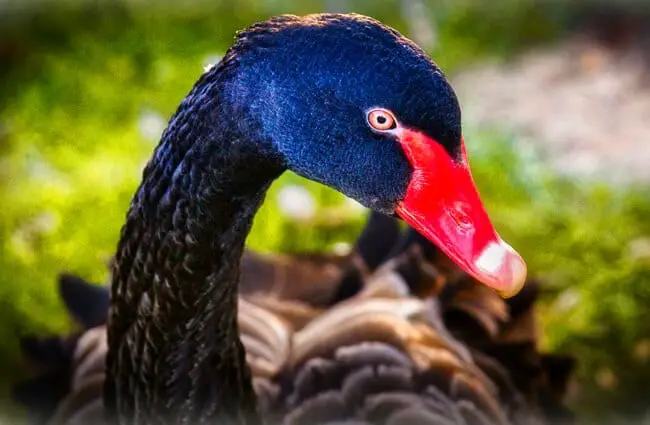
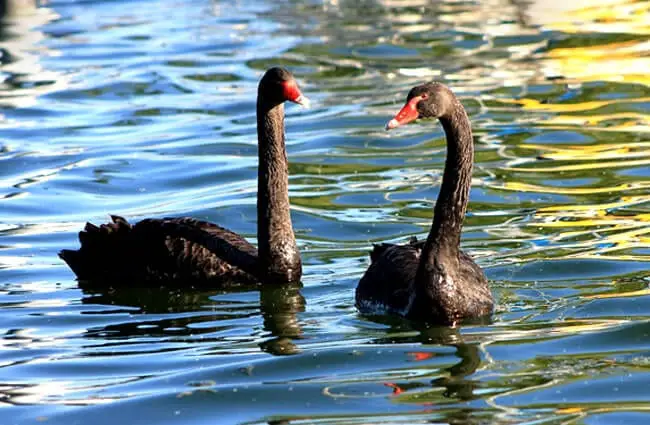


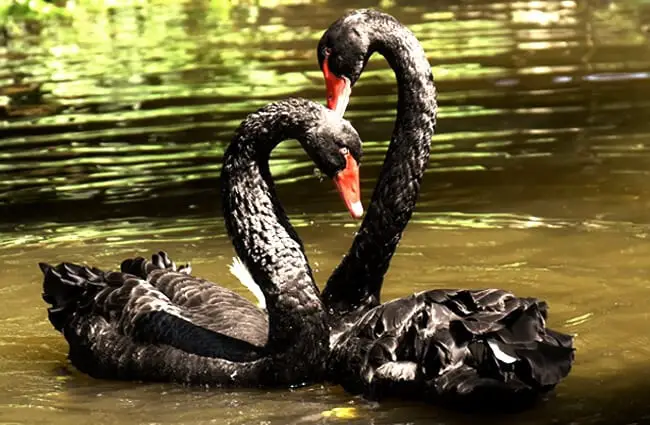
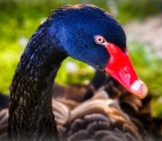
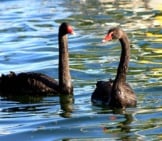
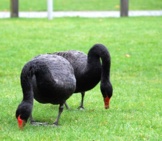
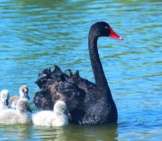
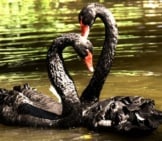
![Red Angus Closeup of a beautiful Red Angus cowPhoto by: U.S. Department of Agriculture [pubic domain]https://creativecommons.org/licenses/by/2.0/](https://animals.net/wp-content/uploads/2020/03/Red-Angus-4-238x178.jpg)












![Red Angus Closeup of a beautiful Red Angus cowPhoto by: U.S. Department of Agriculture [pubic domain]https://creativecommons.org/licenses/by/2.0/](https://animals.net/wp-content/uploads/2020/03/Red-Angus-4-100x75.jpg)

